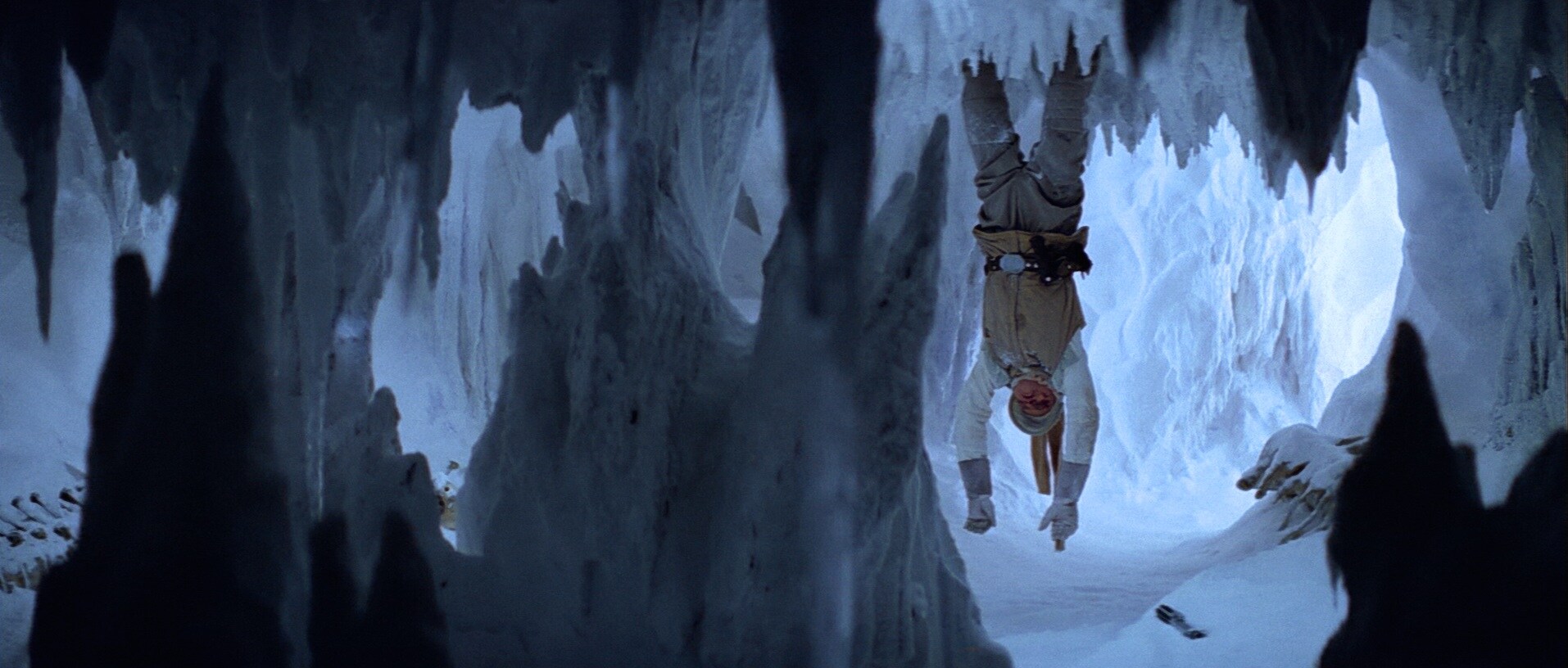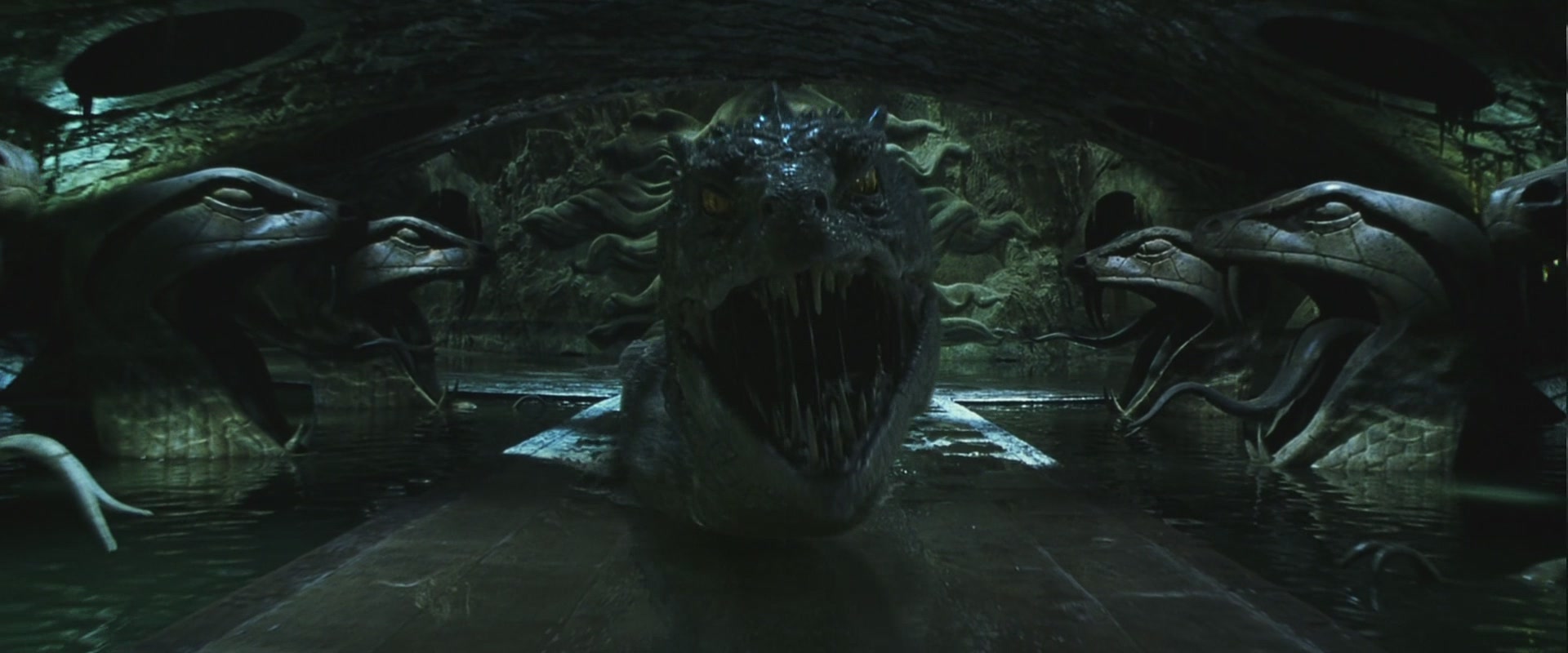MUSEUM MYSTERIES
BY: CHRISTOPHER WAI
Final Note: After the last three text blocks, for my final Museum Mysteries post before graduating, I thought I should have a lighter return to form. I had a few other ideas I'd been working on, so if you're interested, they'll be up on my new blog in the next few weeks..
 | ||||
| Luke Skywalker in a Cave. Star Wars V:The Empire Strikes Back (1980) |
Julien D’Huy, has recently talked about his research in Scientific American last September (now pay walled) and it's an interesting piece about trying to trace the origins of different myths, possibly all the way to the Palaeolithic using databases of attributes.
Trying to trace the broad number of stories we have in our world today isn't necessarily a new temptation*. As D’Huy mentions, Jung was famous for creating common archetypes of our collective conscious from myths. English majors and Star Wars fans will have heard of Joseph Campbell's Hero Cycle. Scholars have played with the question of the Biblical flood myth being a descendant of the one in the Mesopotamian Epic of Gilgamesh , where the hero Gilgamesh comes across an old wise man, who survived a giant flood in a giant boat.
 | ||||
| Lara Croft exploring the Tomb of King Arthur. Tomb Raider Legends (2006) |
It's also something we've played around with in modern fiction. Tomb Raider Legends plays with the idea of the “Monomyth” to have Lara Croft jump from country to country to find the true ancient sword behind Excalibur and other stories behind powerful heroes and their swords. Pseudoscience and conspiracy theorists have also played with this idea. But what results might we get if we try to seriously trace common plot details and structures not for some grand secret conspiracy, but just to try to understand the possible stories from our Palaeolithic ancestors before they spread far across the world?
Linguistic research has been a component of theorizing about cultural identity and population change in the past, whether it be discussions on the waves peopling of the Americas or common ancestry and spread of Indo-European speakers, but how far can one push this? It is an interesting thing to ask, though we probably have to be careful.
From Cave Art to Backtracking from Oral tradition :
Cave art, burial practices and artifacts are generally the way to think about stories, myths, ritual and religion. In recent decades, shamanism has become a dominant approach to interpreting rock art based on analogies with ethnographic evidence (which can be tenuous because cultures and meanings vary over spans of centuries, let alone millennia). As I mentioned in an earlier post last semester, burial practices can be seen even in our Neanderthal relatives, though meaning is difficult.
Language and oral traditions are essentially impossible because there is no written record to work with. Linguists do try to to figure out this gap by backtracking through languages to see how far we can get to looking at language families we have today. D’Huy is trying to do something similar with stories and their details by attempting gather different myths from around the world from later periods. In order to minimize arbitrary comparisons, he borrows a page from bioanthropologists and evolutionary biologists by using phylogenic databases. Phylogenies are like family trees and have been used in evolutionary research to figure out how ancestors and relatives of humans (or other animals and plants) might be related (i.e. who came before who, who has a common ancestor and which common ancestors had common ancestors and the amount of time between different descendants and ancestors).
Then he creates a supertree that collects separate trees:
 |
| A biological example of what a phylogentic supertree is like: Source |
So his method is to try establish a database to link different myths in different regions in all their variations to their oldest versions in different cultures and regions and then look to see how they might connect, not just by their plot, but by specific details mentioned in the same plots and then contrast it to existing theories and watersheds of early human migration (i.e. Out of Africa migrations for early Homo Sapiens and the Bering Strait hypothesis in the Americas). It's not perfect, but it does try to be fairly rigorous to weed out old lazy comparisons.
D’Huy's Proposed “Protomyths”:
1. Polyphemus/ “Monster” in the Cave**:
The protagonist(s) finds themselves trapped in a cave with the entrance guarded by a monster and escapes by hiding underneath the belly of a flock of animals.Greek: Odysseus blinds Polyphemus the Cyclops and escapes his cave after Odysseus blinds him in the middle of the night. Odysseus' men hide under the bellies of Cyclops’ sheep when reinforcements come.
 |
| Source |
Blackfoot (North America): Two hunters transform into a dog and a staff and are brought into a cave by the daughter of the Trickster Crow. They free a herd of Buffalo trapped inside and hide underneath the buffalo to escape.
A galaxy far far away: Luke Skywalker escapes the ice cave of a wampa creature. His friend hides him in the belly of a tantaun as shelter through a snowstorm. (My addition, see first image).
2. "Cosmic Hunt":
A hunter or group of hunters chases an animal or animals, which turn into Ursa Major in the sky.Greek- Arcas, a hunter and grandson of Zeus chases a bear only for zeus to step in and reveal that the bear was his mother transformed by Hera to spite Zeus. Zeus turns mother and child into the constellations Ursa Major and Minor.
Iroquois (North America)- A wounded bear jumps into the sky to escape three hunters who follow along, and together they become Ursa Major.
Chuckchi (Siberian)- Orion, the hunter chases Cassiopeia, the reindeer, in the sky.
Lascaux Cave?: D'Huy suggests a "well-scene" on one of the walls has black spots below a bison, one above and a hunter nearby. The image below may be what he is referring to. I don't know if I really see it... but I suppose.
 |
| Well/Shaft scene from Lascaux. Source |
3. "Pygmalion"***
.jpg) |
| Pygmalion by Tischbein 1800s Source |
A lonely man creates a woman out of wood who is brought to life by a deity.Roman: A sculptor by the name of Pygmalion sculpts a woman of ivory whom he calls Galataea and spends much of his time with it. He prays to Aphrodite for someone like Galataea and finds the statue turned into a human.
Bara (Sub-Saharan Africa): A man carves a woman out of wood and it comes to life. Some variations have a tribal leader try to kidnap her and she becomes wood again.
4. “Serpents and Dragons”
 |
| In lieu of specifics, here's a basilisk Sourc |
5. “Life Giving Sun as a Big Mammal”
No idea, but it's certainly quite a concept that he leaves at the end, along with the next one.
6. “Women as Primordial Guardians of Sacred Knowledge Sanctuaries”
No idea again, but it certainly sounds like something.
Reality, Coincidence or Fiction?
Considering that there is a history of comparative religion or mythology being a tad out there and the many fringe theories that are similar, I tend to be cautious, but the use of phylogenies and databases intrigues me in a way that the less organized methods don't. Additionally, he isn't making claims of lost civilizations nor aliens but a more modest, but equally foundational understanding of the minds of Palaeolithic humans. Granted, if it overreaches, even with highly developed methodologies, it could be more like this:
 |
| Source |
Tracing myths like this is a lot like tracing many other technologies or inventions in the world. There is the diffusionist perspective that says that someone invented an idea or an object and that it was spread and there's the counter that argues that different people can certainly invent similar things on their own. Or it's a hodgepodge both depending on the time period and even if there was a connection once, it likely had different meaning to different peoples at different times. Considering how connected the world is, it's also difficult to prove that the myths collected have not already been influenced by modern peoples telling other or reading about them in the last 200 years. Though it might just be him writing for a specific audience in mind, most of D'Huy's protomyths centre on using Ancient Greek/ Roman versions as the frame of reference to demonstrate equivalences as well, so it may be interesting to see what connections or “Protomyths” may exist that have no Greek equivalent to use as a central point of reference. He tries to connect it to known changes in human migration and life from the Ice Age to the peopling of the Americas and Out of Africa, but it is still tenuous considering how intangible these things can be. But for the risks and flaws, it is certainly something to keep an eye on to see how far one can push to the limits using the computer databases and systematic approaches we have today. In fact, his bold goal is to try to trace this as far as he can to get into the minds of early Homo sapiens. We can't discuss or debate till there's something there for us to discuss after all and this is certainly a fun one to think about.
* also a lack of internet made it difficult to properly link everything.
** Or villainous herder really, D'Huy's “monster” is a tad pejorative, though villanous herder doesn't have a ring to it...
** "Take on me...take me on" from A-ha springs to mind, though I wouldn't want to risk drawing false equivalences...
**** Blog: Cassandra's Paradox for those interested



No comments:
Post a Comment
Note: only a member of this blog may post a comment.